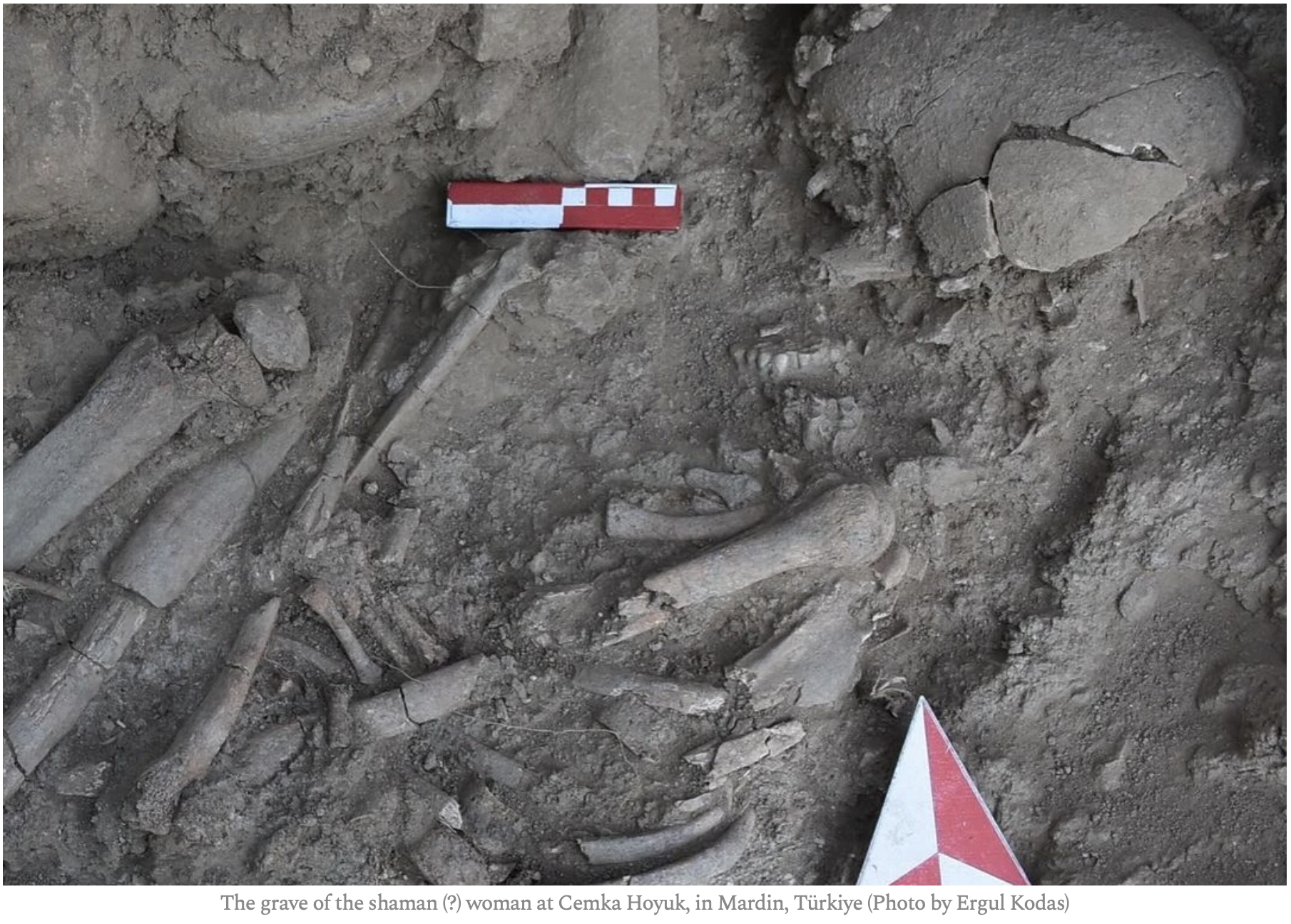 Archaeologists working in Israel claim to have discovered the 12,000-year-old grave of a woman buried with various animal and human body parts, suggesting she may have been an early shaman.
Archaeologists working in Israel claim to have discovered the 12,000-year-old grave of a woman buried with various animal and human body parts, suggesting she may have been an early shaman.
If confirmed, this finding could indicate that shamanism emerged during a pivotal period in human cultural evolution. The study proposes that the woman, buried in the upper reaches of the Tigris River in southeastern Türkiye around 12,000 years ago, may have been a shaman believed to possess a spiritual connection with wild animals.
Recent excavations at Hilazon Tachtit, a cave west of the Sea of Galilee in Israel, provide further evidence of prehistoric shamanism. Hilazon Tachtit was occupied by the Natufians, a people who lived in the Near East between about 15,000 and 11,500 years ago. Many archaeologists view Natufian culture as a transitional phase between hunting and gathering and the sedentary lifestyles of early farmers. At Hilazon Tachtit, a team led by archaeologist Leore Grosman from the Hebrew University of Jerusalem uncovered the remains of at least 25 people, most of whom were buried collectively. However, one burial stood out. A woman, approximately 45 years old at the time of her death and suffering from pelvic and spinal deformities, was buried separately, surrounded by a variety of animal remains. Among the grave goods were tail bones from wild cattle, a wing bone from a golden eagle, the shells of 50 tortoises, and a large foot from another person.
This burial was excavated in 2019 at a Neolithic settlement called Çemka Höyük (meaning “mound by the water”) in southeastern Turkey, according to study author Ergül Kodaş from Mardin Artuklu University. The site is located in the Dargeçit district of Mardin province, on the left bank of the Tigris River.
